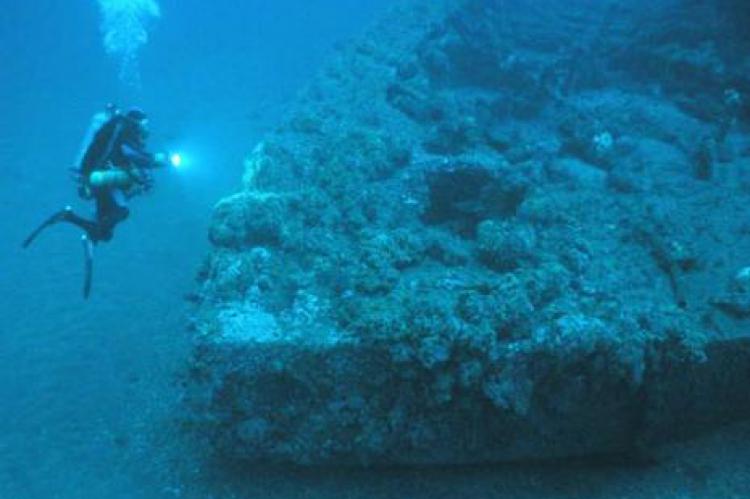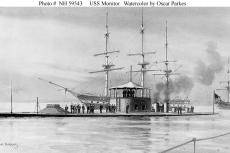Wreck of USS Monitor is threatened
The wreck of the American Civil War ironclad USS Monitor is at risk from human activity and natural deterioration.
The wreck of the USS Monitor was designated the first national marine sanctuary in 1975.
USS Monitor, a 987-ton armored turret gunboat, was built at New York to the design of John Ericsson. She was the first of what became a large number of "monitors" in the United States and other navies. Commissioned on 25 February 1862, she soon was underway for Hampton Roads, Virginia. Monitor arrived there on 9 March, and was immediately sent into action against the Confederate ironclad Virginia , which had sunk two U.S. Navy ships the previous day. The resulting battle, the first between iron-armored warships, was a tactical draw. However, Monitor prevented the Virginia from gaining control of Hampton Roads and thus preserved the Federal blockade of the Norfolk area.
The sanctuary, which lies 16 miles off of Cape Hatteras, N.C., includes a column of water one nautical mile in diameter that extends down 240 feet to the seabed around the wreck. The first-of-its-kind assessment of the sanctuary’s archaeological and living marine resources serves as a baseline for monitoring changes to the wreck and sanctuary.
Wreck of USS Monitor is threatened
According to a newly released report from NOAA, corrosion, strong currents, hurricanes, high water temperatures, highly salty water, and even discarded fishing gear tangled in the wreck threaten its stability in the long run. Looting of the wreck is not currently a major problem but remains a concern due to diving, boating and fishing in the area.
Sea life, however, is abundant within the Monitor National Marine Sanctuary, which contains the shipwreck. The ship-turned-artificial-reef supports a variety of corals and sponges, along with black seabass, oyster toadfish and great barracuda. Water quality in the sanctuary is generally good, with no evidence of any risks to human health.



